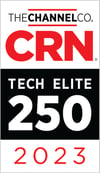When it comes to a company's infrastructure, the word "migration" can strike fear and dread in the hearts of many CIOs and IT Directors. Why? Cost. Cost is the number one issue and time is a close second. The day to day workload is impacted by a migration and people are a costly internal resource. These are hurdles the CIO must take into account when looking at a migration. Aside from cost and time, CIOs need to ensure that the data is moved without running into a ton of problems along the way. But there are some measures that can be taken to mitigate these issues and make the migration a smooth one.
Create a Plan
A whiteboard session is the first step in creating a roadmap for the infrastructure migration. Every company is different with different needs and there are so many ways to accomplish a goal. Working with a solution provider who can explain how all the elements of the infrastructure will move is key because each piece of infrastructure may have a different method of moving. All solution providers are not created equally - choose one that has many different partners and solutions. You can't fit a square peg in a round hole, so it's important to choose a vendor that is flexible enough to meet your needs, and not simply a reseller of a couple of different options.
Along those lines, a small business will need help creating the plan, whereas a large enterprise, that has been through a number of migrations, may have a plan already laid out. Every business is different.
Virtualize it
There are tools available to virtualize the systems. This provides the capability to do more with less money. Virtualizing the data is a method of making the data portable and free to move between systems. With the data virtualized you have unlocked it from being vendor specific to being open to move between tiers of storage, brands of storage and physical locations of storage. No longer will it require 6 months to migrate… do it over a weekend with zero downtime.
Gather the Stakeholders
The migration of your infrastructure will impact not only the IT department, but other departments as well. Be sure that all the stakeholders are at the table when creating a plan, as you may need buy-in to move forward. This will ensure a successful project, without surprises during the project.
Depth of Knowledge
In the effort to keep cost as low as possible, getting it right the first time is critical. Choose a solution provider that has senior engineers both on the pre-sales AND post-sales teams, so you're only doing it once. This is a big time/money saver. You want decades of experience, not years.
If you are facing a migration and need help, ProActive Solutions is here for you. Take advantage of a free Whiteboard Session with our Senior Engineers.
Brian and his team(s) work very closely with Sales to help clients achieve their company’s short- and long-term strategic goals by focusing on time to value, market, and business initiatives. He is currently responsible for every facet of Pre-Sales Technical and Hardware Services.
With more than 20 years of experience in the technology industry, from Fortune 10 accounts to local businesses, Brian has a proven track record of success in Enterprise and SMB environments. Prior to joining ProActive Solutions, Brian worked for several OEM vendors, including IBM and DELL EMC. He also spent time in customer environments at both State Street Bank and Sprint where he was tasked with transforming their IT organizations. By executing strategic initiatives that he put in place, he was able to transform their environment by using modern technology to gain operational performance and business value.
Brian has a AS in Electrical Engineering and BS in Technical Management from DeVry University. He has also achieved certifications from IBM, Dell EMC, Cisco, VMWare, Nutanix, Pure Storage, Amazon AWS, and so many others.



